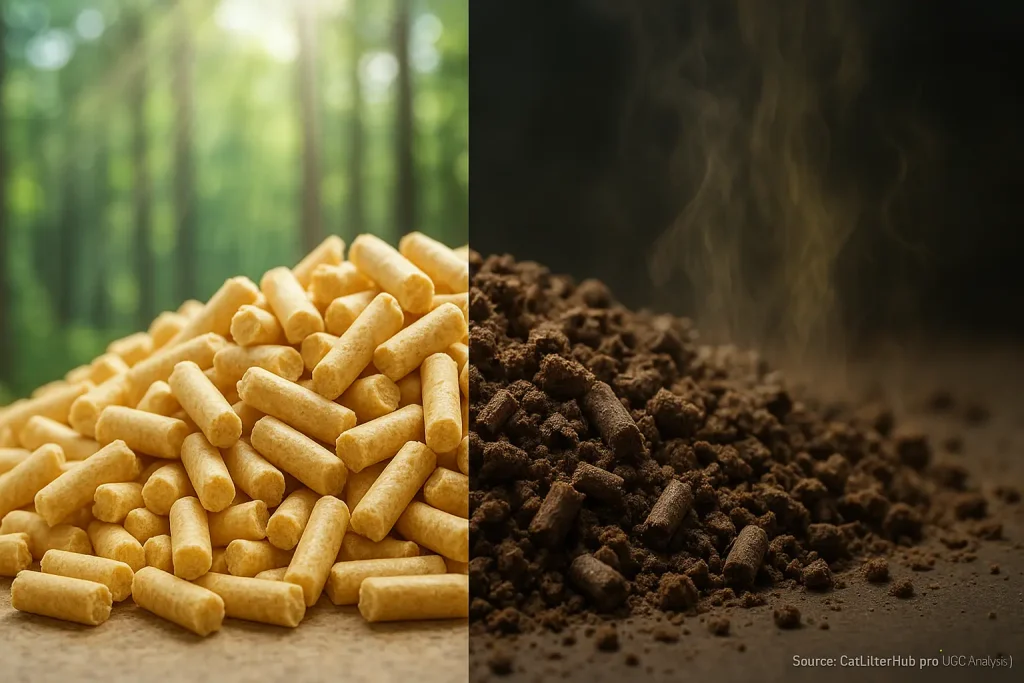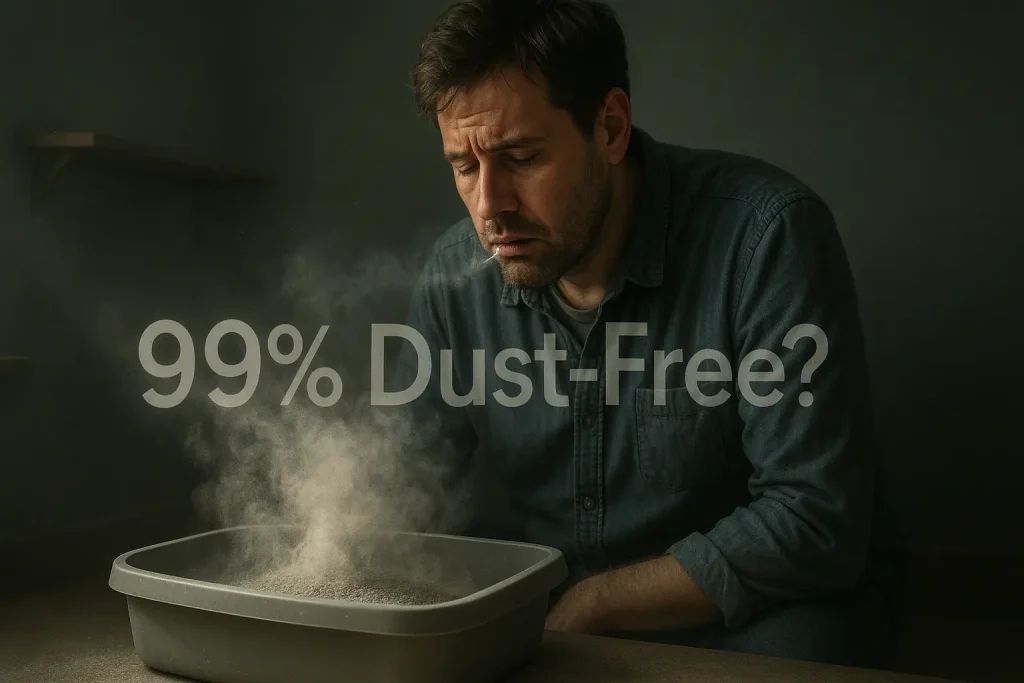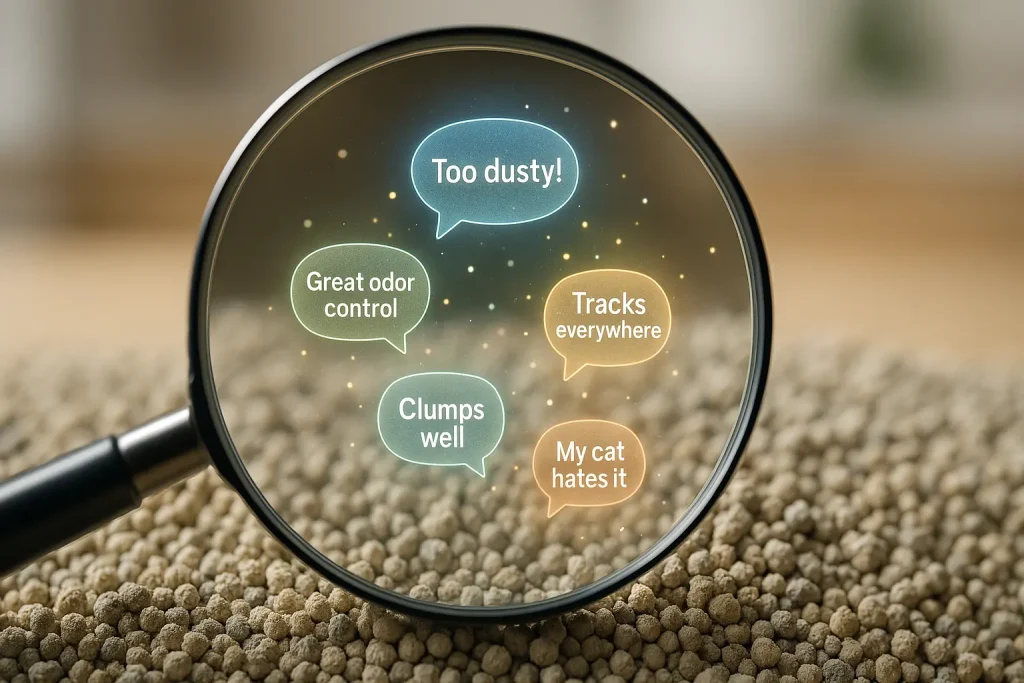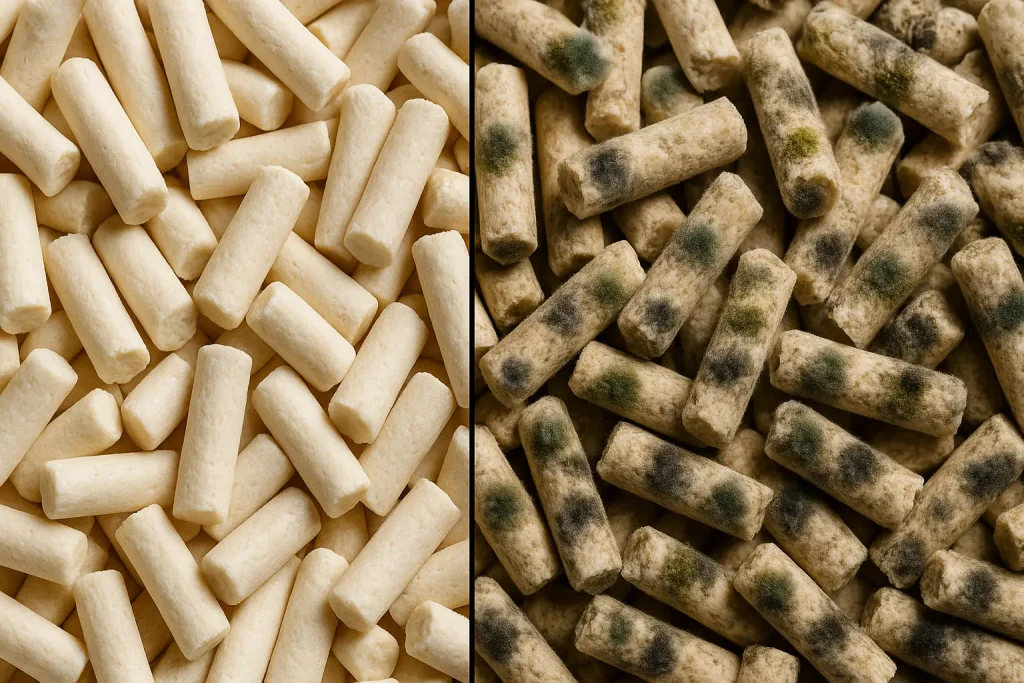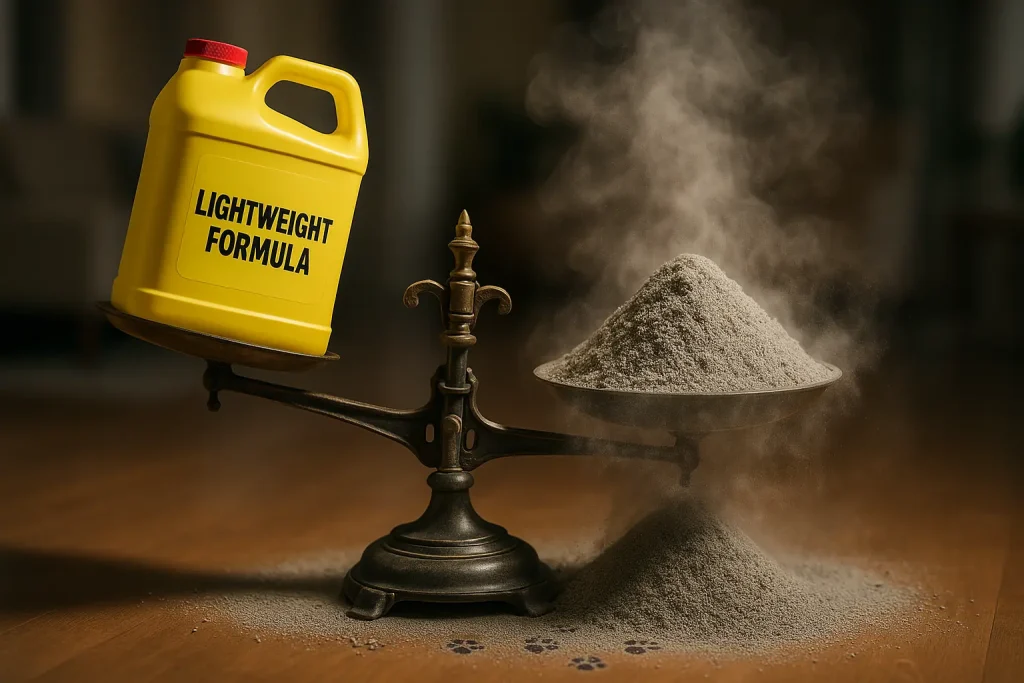The Quest for Perfection: Why Cat Owners Play Mad Scientist with Litter
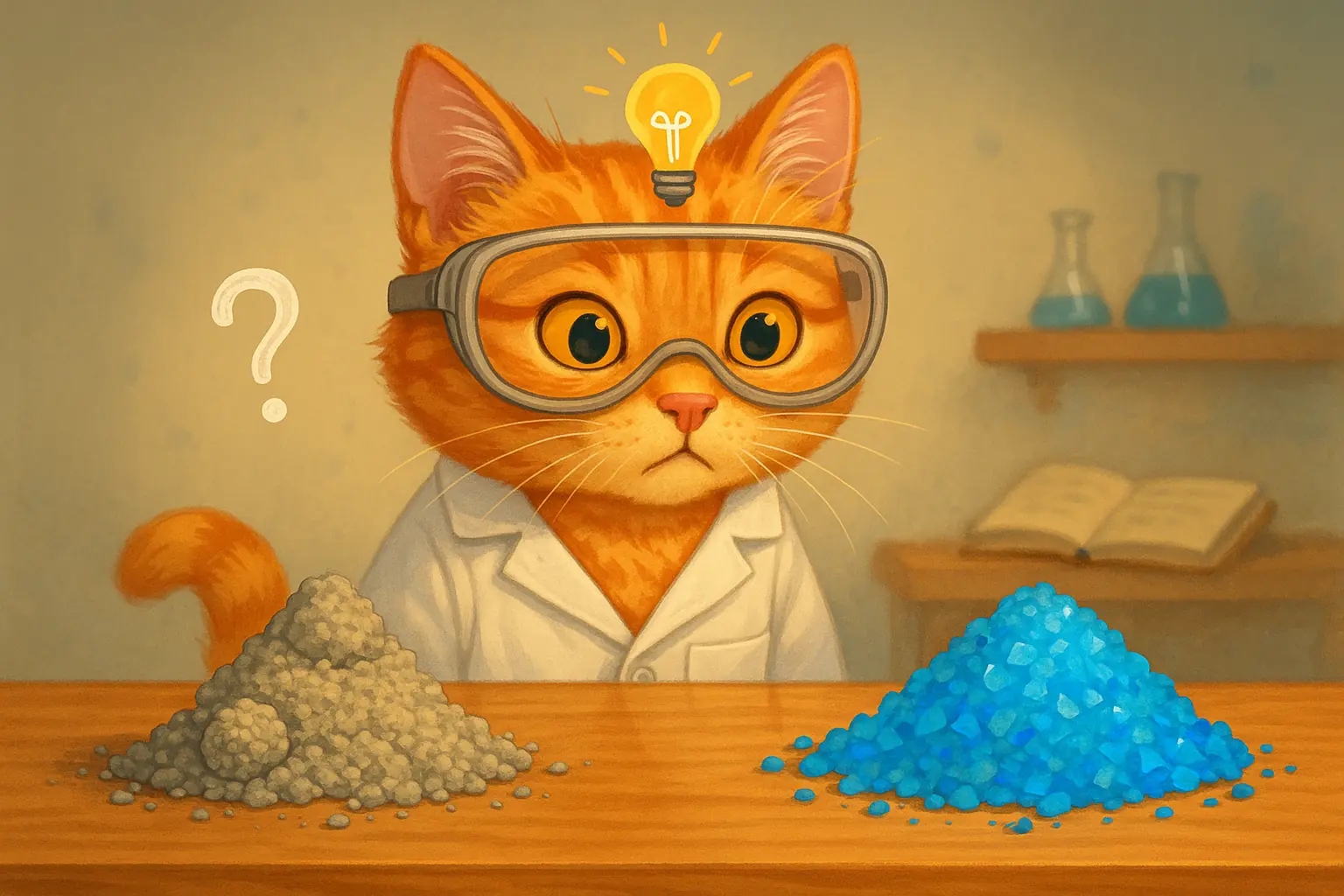
You seek that one perfect cat litter. This quest feels endless. You are not alone. Many cat owners share this frustration. No single product satisfies every need. Odor control might be excellent. Then, dust is a huge problem. Or tracking makes your home a mess. Cat acceptance remains a constant hurdle. This search drives many to experiment.
What can a determined cat owner do? Many become home-grown alchemists. They concoct their own 'litter cocktails'. Picture Sarah. Her clay litter produces too much dust. She loves its strong clumps, however. She wonders about adding silica crystals. Could a sprinkle solve her dilemma? This exact experiment happens in many homes. Owners seek that elusive perfect balance.
Do these custom blends work? Or are they a recipe for more mess? Perhaps a confused cat results. Cat Litter Hub analyzed thousands of user experiences. We sifted through forum posts. We examined numerous reviews. We even read desperate cries for help from owners. This investigation uncovers the genuine story on litter mixing. This article shares common concoctions. It details their reported successes. It also reveals frequent fiascos. All insights derive from collective user wisdom.
Popular Litter Cocktails: What Users Are Mixing & Why
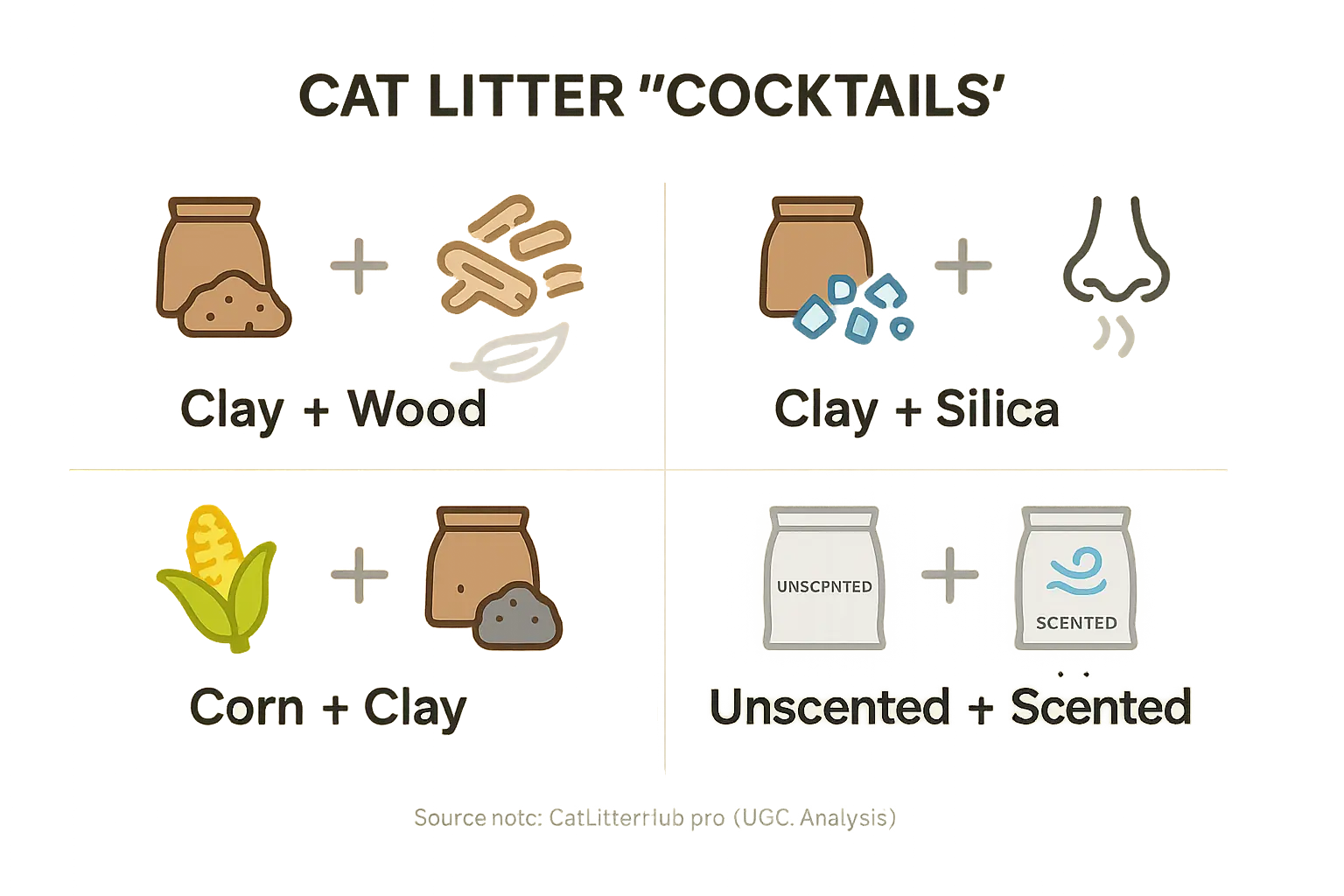
Cat owners often become home chemists, blending different litters to solve persistent problems. Our trawl through user forums reveals several popular "litter cocktails." Each mix represents an owner's attempt to achieve a specific, often elusive, performance goal. These experiments highlight common frustrations with single-litter options.
One frequently mentioned combination is clay litter mixed with pine or wood-based litters. What are users chasing here? They typically aim to unite clay's strong clumping abilities with the natural odor absorption or lighter weight of wood. "I love pine's scent, but the clumps fell apart," many express, "so I added some clay hoping for the best of both." User experiences documented online, however, show clumping integrity can be compromised. Some also report an unexpected increase in dust, often attributed to the clay component.
Another blend appearing in user discussions is clay combined with silica gel crystals. The primary driver for this mix is usually enhanced odor control. Owners hope silica's superior absorbency will supercharge the clay, extending the litter's usable life. Scooping convenience from the clay remains a desired factor. Yet, feedback frequently points to challenges. Achieving an even distribution of crystals within the clay can be difficult. Some cats, users note, also dislike the altered texture underfoot, leading to litter box avoidance.
Our analysis of owner posts also shows attempts to mix corn or wheat litters with clay. The logic here involves seeking the biodegradability and natural appeal of corn or wheat. Clay is added to boost clumping strength, a common weak point for some natural litters. "I want something eco-friendly that actually clumps like my old clay," is a typical sentiment. The downside? User reviews often highlight increased dust or tracking, with the clay portion usually pinpointed as the culprit.
Finally, a more subtle form of mixing involves unscented litter with a small amount of scented litter of the same type. Cat owners employing this strategy are trying to introduce a very mild fragrance. The goal is a pleasant but not overpowering scent, minimizing the risk of cat aversion. This requires a careful balancing act. User accounts confirm that too much scented litter quickly leads to cats rejecting the box entirely. This experimentation underscores the desire for effective odor control without overwhelming sensitive feline noses.
When Cocktails Work: The Perks of a Well-Crafted Litter Mix (According to Users)
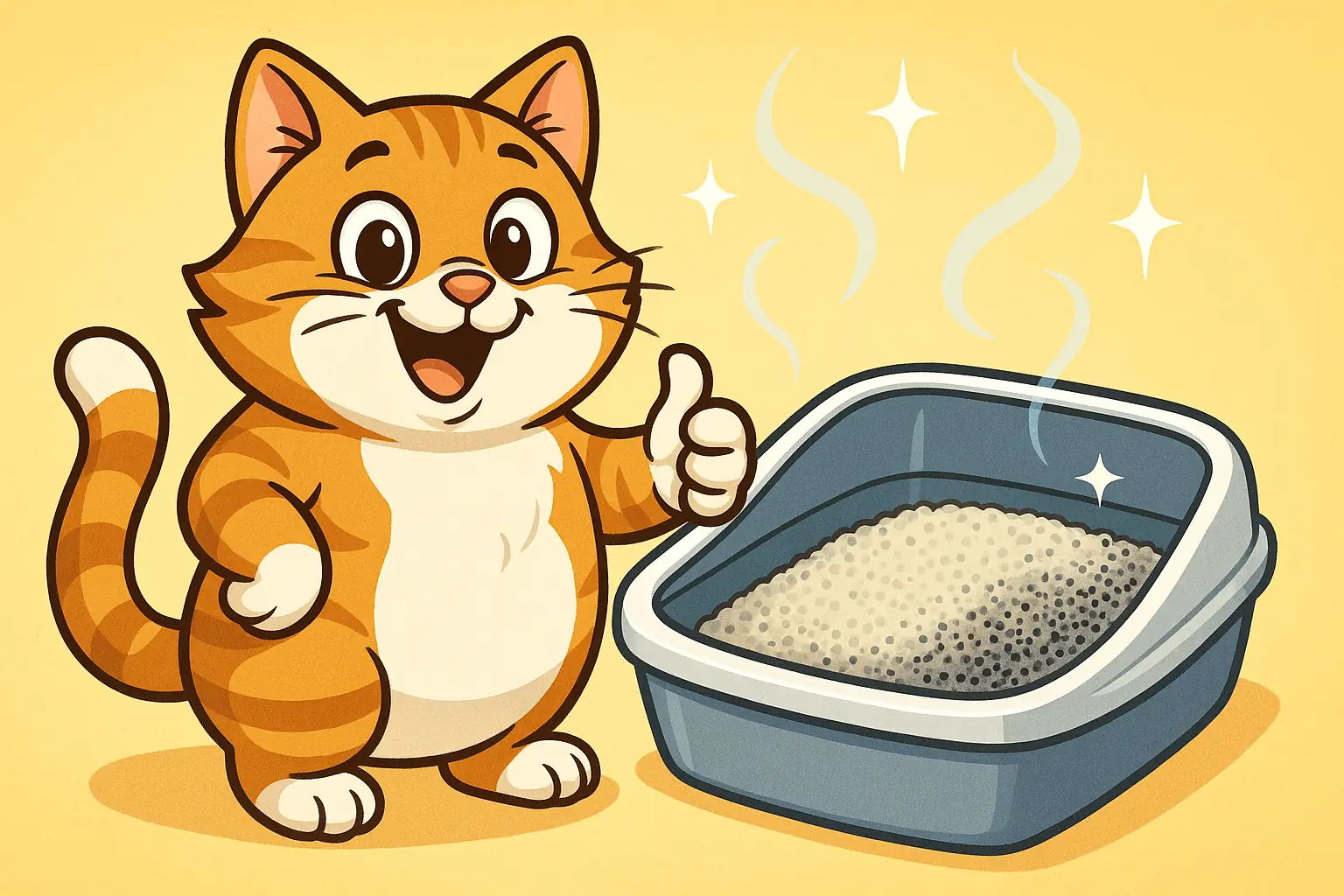
It's not always a disaster when mixing litters. Some cat owners genuinely strike gold. The most frequently praised outcome, according to our UGC analysis, is significantly enhanced odor control. Imagine finally conquering that persistent litter box smell, especially in multi-cat households. That's what users who've had success often point to. "Nothing else worked for my apartment's ammonia issue," a typical comment might detail, "until I layered unscented clumping clay with a thin cap of activated charcoal litter. Odor gone!" These are the discoveries that make experiments worthwhile.
Improved clumping also emerges as a key benefit in user discussions. Many owners report that mixing a robust clumping clay with a less effective, perhaps lighter natural litter, like certain wood or paper types, can yield surprisingly better results. The feedback suggests these combinations create more manageable, solid clumps. These clumps don't break apart as easily during scooping. "My old pellets just fell through the scoop," one owner explained, "but mixed with some clay, they form actual clumps!" This practical improvement simplifies daily cleaning for these users.
Better cat acceptance is another win highlighted in owner experiences. A cat might initially reject a new litter. Texture or scent often causes this aversion. Users find that a gradual introduction, mixing the new litter with a familiar, preferred one, frequently solves the problem. This eases transitions for notoriously picky felines. The collective experience suggests this gentle approach can make all the difference. "He wouldn't touch the silica alone," a user shared, "but mixed with his old clay, he started using it within days."
Potential cost savings, approached with a calculated strategy, also appear in user reports. Some cat parents claim they stretch their budget effectively this way. They use a more expensive, high-performance litter as a smaller component. This is combined with a cheaper, decent-quality base litter. This method, users assert, extends the life of the premium product. Cat Litter Hub's analysis of feedback shows this requires careful balancing to maintain overall litter effectiveness. It's a balancing act, but for some, the savings are a clear victory.
The Hangover: Common Problems & Failures with Mixed Litters (User Beware!)
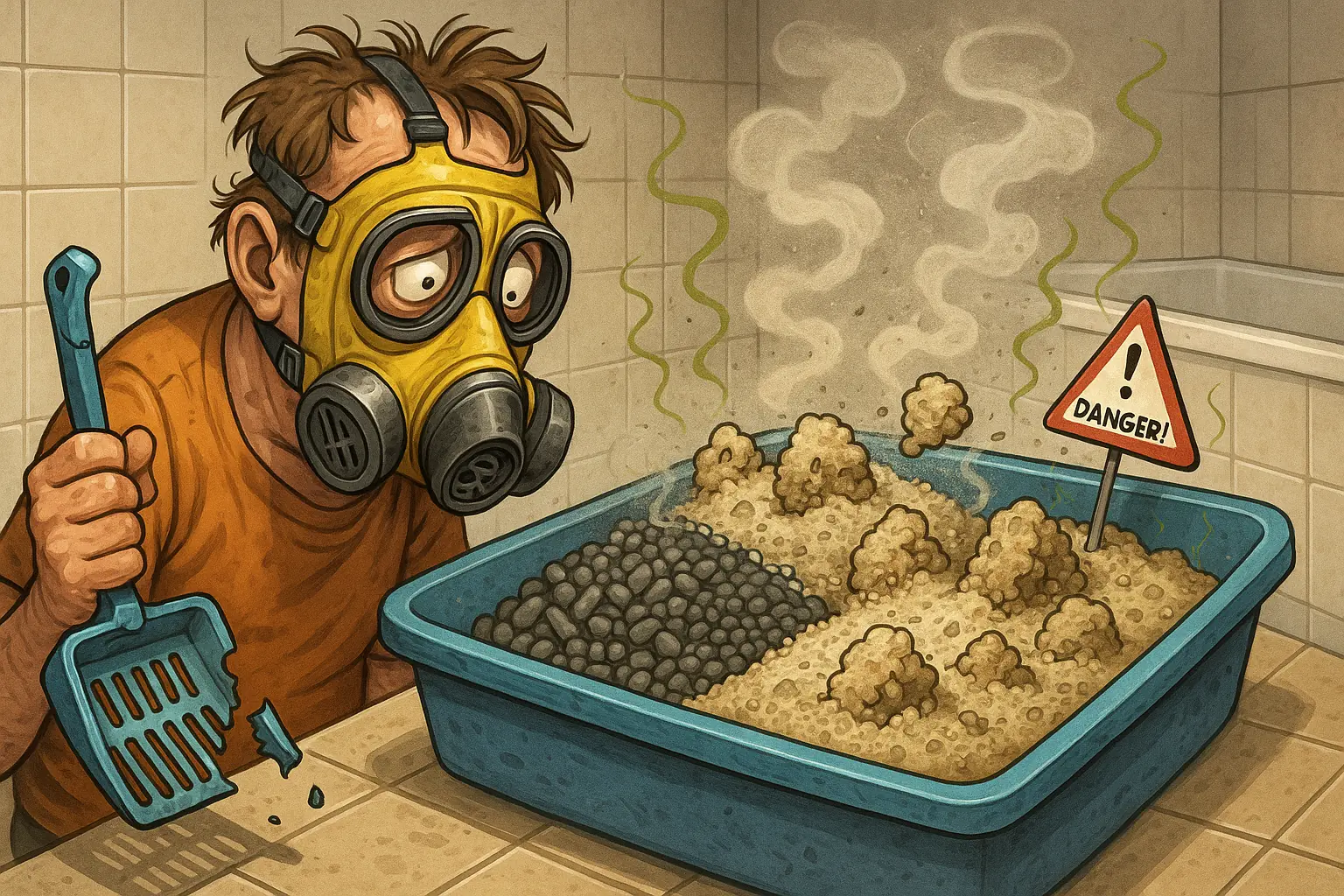
But the dream of a perfect litter cocktail often turns into a messy reality. Here's what users warn about, based on countless shared experiences.
Increased dust is a primary complaint. Many owners discover the hard way that mixing litters, particularly when clay is involved, creates more airborne particles. "I hoped adding some to my clay would cut down the film," one user typically reports, "instead, the dust seemed to multiply." This experience is echoed across forums. The low-dust promise of one component often vanishes. Respiratory comfort for cats and humans can suffer.
Uneven mixing presents another common frustration. Litters with different granule sizes or weights rarely stay blended. User accounts consistently describe finer particles sinking. Heavier pellets or crystals often migrate to the surface. Your cat digs. The carefully measured ratio disappears. This separation leads to inconsistent absorbency and odor control across the box. Some spots get overloaded with one type. Performance becomes a gamble.
Compromised clumping ability frequently dashes hopes. Adding a non-clumping or weakly clumping litter to a strong clumping one often dilutes its power. "My solid clumps became fragile messes," is a near-universal lament in these scenarios. The clumping agents get spread too thin. Scooping turns into a frustrating exercise. Broken pieces mean more soiled litter left behind. This defeats a key reason for choosing clumping litter initially.
Worsened odor control can be an unexpected, unwelcome surprise. The collective experience of cat parents suggests some mixtures just don't play well together. One component might become saturated quickly, then fail entirely. Sometimes, the new texture itself is the problem. If a cat dislikes the feel, it might not dig and bury waste thoroughly. Exposed waste equals more odor. This is a significant step backward for many households.
Cat rejection remains a major hurdle. Felines are creatures of habit. A frequent warning sign from users involves their cats suddenly avoiding the litter box after a mix is introduced. The unfamiliar texture underfoot is a common culprit. A strange new scent can also trigger refusal. "My cat sniffed the new mix and walked away," countless reviews state. This can, unfortunately, lead to messes outside the box. A truly frustrating outcome.
Interactive Tool: Analyze Your Litter Cocktail Idea!
Litter Cocktail Analyzer
Disclaimer: Results based on generalized user patterns. Your cat's reaction is key! Always introduce changes gradually.
Hopefully, our Litter Cocktail Analyzer offered some initial ideas. Remember, these insights come from broad user patterns. Your cat's actual experience may differ. Successful litter mixing often demands careful, patient experimentation. Every feline friend is unique.
The golden rule? Gradual introduction. Never shock your cat with a completely new litter box environment overnight. Many users share stories of immediate rejection from abrupt changes. Mix a tiny amount of the new component in first. Watch your cat's reaction for several days. Slowly increase the ratio if your cat seems comfortable and uses the box normally.
While the perfect cocktail is tempting, consider another path. Sometimes finding one reliable single litter brings the most peace. Your cat’s consistent use is the true goal. Don't be afraid to stick with what already works well for your household. For deeper dives into individual litter materials, explore our comprehensive guides linked above the tool.
The Verdict on Litter Cocktails: Is It Worth the Experiment?
So, the million-dollar question: should you mix your cat's litter? Our extensive analysis of user experiences reveals no simple 'yes' or 'no' answer. Some cat owners report improved odor control or better clumping with custom blends. Success, however, is not a universal outcome. The collective feedback shows widely variable results from litter mixing.
The path of the litter alchemist presents several potential pitfalls. Increased dust is a frequent complaint. Compromised clumping ability of the primary litter also frustrates many users. Worse still, some cats stage protests outside the box. These are not mere hypotheticals; they are common refrains in user communities when blends go wrong.
If you choose to experiment, user wisdom strongly advises a cautious approach. Go SLOW. Introduce tiny changes to the litter composition. Observe your cat’s behavior and acceptance meticulously. Always prioritize your cat's comfort and consistent use of the litter box. Sometimes, the "perfect" mix is simply the one your feline companion uses without complaint.
Ultimately, the quest for an ideal litter cocktail highlights a common trait among cat owners. We often go to great lengths for our furry companions' happiness. Just remember, in the litter box arena, your cat's preference is the deciding factor. Their vote truly counts.


